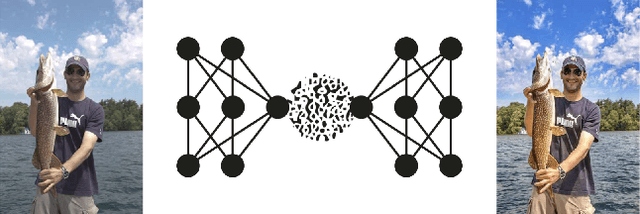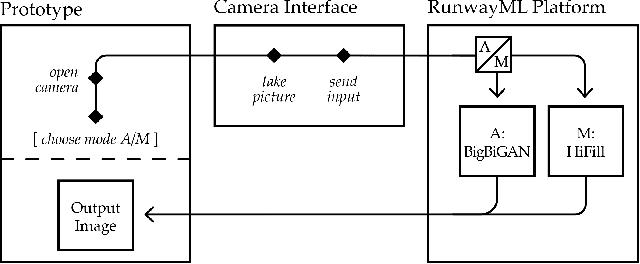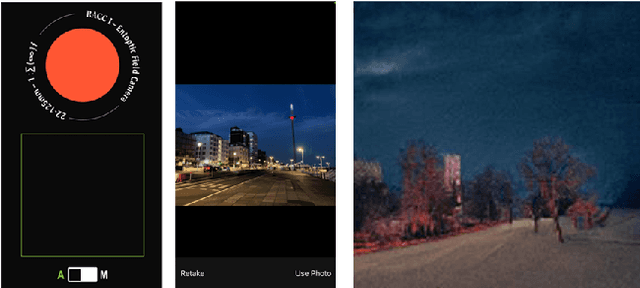Joseph Lindley
When Discourse Stalls: Moving Past Five Semantic Stopsigns about Generative AI in Design Research
Mar 11, 2025Abstract:This essay examines how Generative AI (GenAI) is rapidly transforming design practices and how discourse often falls into over-simplified narratives that impede meaningful research and practical progress. We identify and deconstruct five prevalent "semantic stopsigns" -- reductive framings about GenAI in design that halt deeper inquiry and limit productive engagement. Reflecting upon two expert workshops at ACM conferences and semi-structured interviews with design practitioners, we analyze how these stopsigns manifest in research and practice. Our analysis develops mid-level knowledge that bridges theoretical discourse and practical implementation, helping designers and researchers interrogate common assumptions about GenAI in their own contexts. By recasting these stopsigns into more nuanced frameworks, we provide the design research community with practical approaches for thinking about and working with these emerging technologies.
Responding to Generative AI Technologies with Research-through-Design: The Ryelands AI Lab as an Exploratory Study
May 07, 2024Abstract:Generative AI technologies demand new practical and critical competencies, which call on design to respond to and foster these. We present an exploratory study guided by Research-through-Design, in which we partnered with a primary school to develop a constructionist curriculum centered on students interacting with a generative AI technology. We provide a detailed account of the design of and outputs from the curriculum and learning materials, finding centrally that the reflexive and prolonged `hands-on' approach led to a co-development of students' practical and critical competencies. From the study, we contribute guidance for designing constructionist approaches to generative AI technology education; further arguing to do so with `critical responsivity.' We then discuss how HCI researchers may leverage constructionist strategies in designing interactions with generative AI technologies; and suggest that Research-through-Design can play an important role as a `rapid response methodology' capable of reacting to fast-evolving, disruptive technologies such as generative AI.
On the Standardization of Behavioral Use Clauses and Their Adoption for Responsible Licensing of AI
Feb 07, 2024Abstract:Growing concerns over negligent or malicious uses of AI have increased the appetite for tools that help manage the risks of the technology. In 2018, licenses with behaviorial-use clauses (commonly referred to as Responsible AI Licenses) were proposed to give developers a framework for releasing AI assets while specifying their users to mitigate negative applications. As of the end of 2023, on the order of 40,000 software and model repositories have adopted responsible AI licenses licenses. Notable models licensed with behavioral use clauses include BLOOM (language) and LLaMA2 (language), Stable Diffusion (image), and GRID (robotics). This paper explores why and how these licenses have been adopted, and why and how they have been adapted to fit particular use cases. We use a mixed-methods methodology of qualitative interviews, clustering of license clauses, and quantitative analysis of license adoption. Based on this evidence we take the position that responsible AI licenses need standardization to avoid confusing users or diluting their impact. At the same time, customization of behavioral restrictions is also appropriate in some contexts (e.g., medical domains). We advocate for ``standardized customization'' that can meet users' needs and can be supported via tooling.
The Entoptic Field Camera as Metaphor-Driven Research-through-Design with AI Technologies
Jan 23, 2023



Abstract:Artificial intelligence (AI) technologies are widely deployed in smartphone photography; and prompt-based image synthesis models have rapidly become commonplace. In this paper, we describe a Research-through-Design (RtD) project which explores this shift in the means and modes of image production via the creation and use of the Entoptic Field Camera. Entoptic phenomena usually refer to perceptions of floaters or bright blue dots stemming from the physiological interplay of the eye and brain. We use the term entoptic as a metaphor to investigate how the material interplay of data and models in AI technologies shapes human experiences of reality. Through our case study using first-person design and a field study, we offer implications for critical, reflective, more-than-human and ludic design to engage AI technologies; the conceptualisation of an RtD research space which contributes to AI literacy discourses; and outline a research trajectory concerning materiality and design affordances of AI technologies.
 Add to Chrome
Add to Chrome Add to Firefox
Add to Firefox Add to Edge
Add to Edge